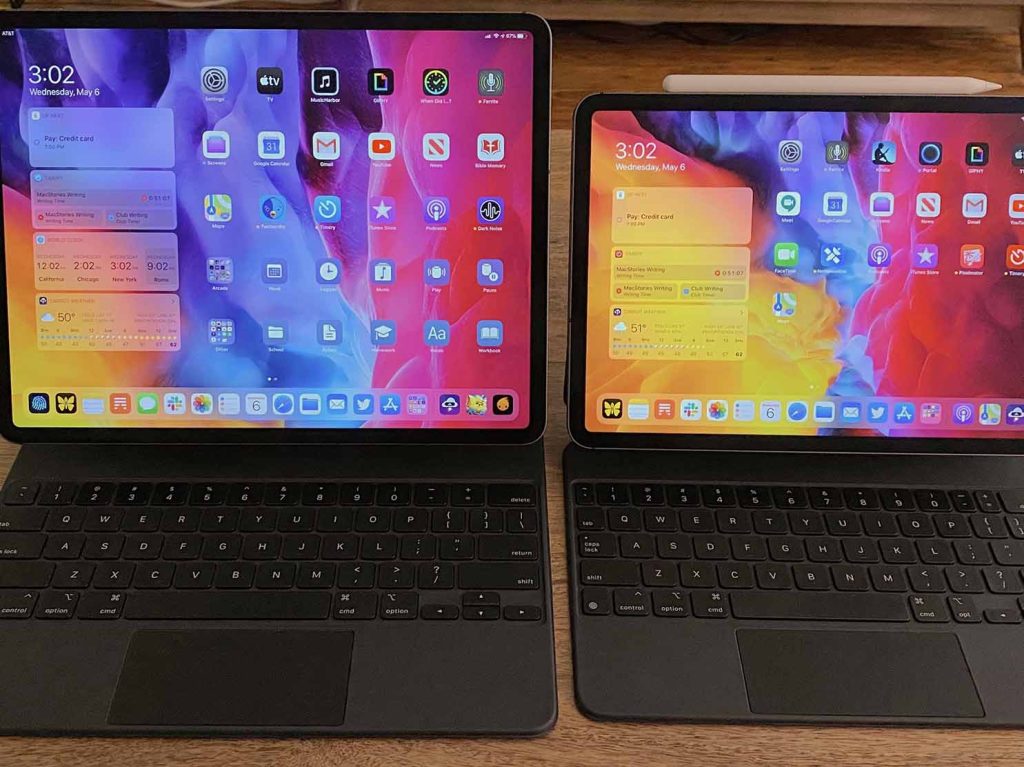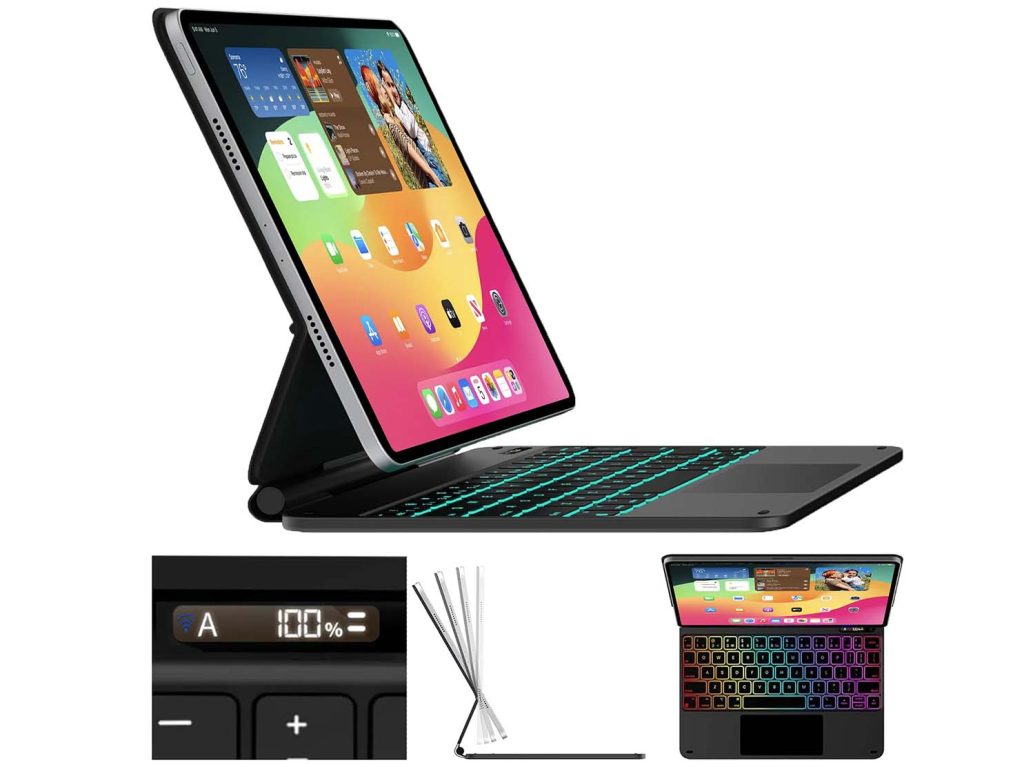The 2025 iPad lineup has become more diverse than ever before. Whether it’s the basic model for students, the Air series focused on media consumption, or the Pro series designed for professionals, each iPad tries to offer the best solution for different groups of users. But having too many choices isn’t always a good thing. Many people get confused by the specs, misled by prices, or overlook their actual usage needs, only to find afterward that they “don’t use it enough,” “wasted money,” “didn’t need it,” or “wish I had chosen a different model.”
So before you open your wallet, you must clarify these three key questions:
- Do you really know what kind of user you are?
- The official models increasingly resemble “nested dolls”—which upgrades are real, and which are marketing traps?
- How should your budget and intended usage match? Is it really worth going for a high-end or Pro model?
Based on the full range of iPad products in 2025, combined with usage scenarios, performance analysis and practical suggestions, I will help you avoid the three most easily overlooked “pitfalls” when purchasing, and make a truly rational and cost-saving choice.
1. Who Are You as a User? Clarify Your Usage Scenarios Before Choosing a Model
Many people look at specs first—CPU, memory, refresh rate, cameras—but what you should really think about first is: “What am I planning to use this for?”
User Type 1: Students / Light Office Use
Common Uses: Watching online courses, taking notes, writing papers, remote meetings, researching
Recommended Models: iPad 11 (11th Generation, 2025) or iPad Air 6 (M2 chip version)
The 2025 iPad 11 fully switches to a USB-C port, features a 10.9-inch screen, and is powered by the A16 chip, with significant performance improvements over the previous generation. Together with the new low-latency Apple Pencil USB-C version and Magic Keyboard, it’s an excellent cost-performance choice for students and light office users.
The Air 6 takes performance further with the M2 chip, supports Pro-grade accessories, and for the first time offers HDR display and 120Hz adaptive refresh rate, great for users sensitive to visuals or who want smoother note-taking.
Avoid Pitfalls:
- iPad 11 does not support hover functionality or high refresh rate, so it suits those who don’t seek the ultimate handwriting experience.
- For “art learners” or “note-taking enthusiasts,” the Air 6 is closer to Pro in feel but costs much less.
User Type 2: Family Entertainment / Moderate Creativity
Common Uses: Watching movies, photo viewing, video editing, light illustration
Recommended Models: iPad Air 6 (M2) or Pro 11 (M4)
Air 6 offers HDR screen, strong performance, and better speakers, suitable for binge-watchers, beginner video editors, or image creators. Support for the 2nd generation Apple Pencil and Magic Keyboard greatly expands its productivity capabilities.
The 2025 iPad Pro 11 (M4 chip + OLED) introduces the dual-layer Tandem OLED screen with extremely high contrast and color accuracy. Coupled with the M4 chip and neural engine, it easily handles video editing, music production, and other moderate creative work.
Avoid Pitfalls:

- The M4 Pro’s screen is impressive, but the price jumps significantly. If you’re not doing professional creative work, Air 6 is enough.
- Buying a Pro just to watch shows is a massive waste of performance.
User Type 3: Professional Content Creators / Heavy Business Users
Common Uses: Professional drawing, video editing, music production, architectural drawings, PPT presentations, virtual studio control
Recommended Model: iPad Pro 13 (2025 OLED version)
The 2025 iPad Pro 13-inch is the thinnest Apple device ever at only 5.1mm thick and weighs just 579g. The screen supports HDR XDR quality and pairs with the M4 chip and neural processor. It’s no longer just an “iPad” but a genuine creative terminal that can replace a light MacBook.
Avoid Pitfalls:
- If you don’t have clear creative needs, don’t blindly chase the Pro 13. It’s an extreme work machine, not for pure entertainment.
- Pro users are advised to pair it with the latest Apple Pencil Pro (supporting hinge sensing and haptic feedback) and the Pro Magic Keyboard for a complete creative experience.
2. Are Configuration Upgrades Really Useful? Beware of These Common “Tricks”
- Chip performance is often overkill—newer isn’t always better
Many think that buying an M-series chip means it can handle all needs. But most iPad apps haven’t caught up with the M-chip’s power—especially M3 and M4.
Unless you do 4K/8K video editing, audio synthesis, or heavy multitasking, the A-series chips like A16/A17 are already enough. M-series chips are more like “buying for the future.”
Practical advice:
- Watching videos, gaming, note-taking: A16 chip suffices.
- Occasional video editing and image retouching: M2 is balanced.
- Professional creation and large projects: M4 is worth the investment.
- Screen size ≠ the entire user experience
Many hesitate between 11-inch and 13-inch, thinking “bigger screen = better experience.”
In reality, portability and whether you can hold it in one hand comfortably are the keys affecting usage frequency. The 13-inch iPad is impressive but heavier, making one-handed use in bed or on the subway inconvenient.
Practical advice:
- Fixed home use: 13-inch offers a better experience.
- School or office commuting: 11-inch is more flexible.
- Frequent mobile work: 11-inch is the best balance of portability and function.
- Storage capacity is the biggest trap
Many 2025 iPads still start at 128GB, which sounds big. But if you store lots of videos, pictures, apps, or do light editing, you’ll quickly run out of space. Apple doesn’t support TF card expansion, so you can only rely on iCloud or buy a new device.
Practical advice:
- Regular use: start from 256GB for stability.
- Video creators: 512GB or 1TB for peace of mind.
- Pure media consumption: 128GB is enough (with streaming).

3. How to Allocate Your Budget Most Rationally?
Many people have limited budgets but want a “buy once, buy right” device. This often leads to buying something mismatched to their lifestyle in pursuit of specs. A reasonable budget plan should revolve around “frequency of use” and “whether productivity is a necessity.”
| User Type | Recommended Model | Starting Price (USD) | Suggested Accessories |
| Students | iPad 11 | $449 | Apple Pencil USB-C |
| Light Creators | iPad Air 6 | $599 | Pencil 2 / Magic Keyboard |
| Heavy Creators | iPad Pro 11 | $999 | Pencil Pro / Magic Keyboard Pro |
| Professional Users | iPad Pro 13 | $1299 | Full Pro Accessories |
Avoid Pitfalls:
- Buying a Pro but not pairing it with a Magic Keyboard or accessories and only watching videos is a huge waste.
- If on a budget, better to pick a mid-level model with accessories than a high-end one without.
Brief Purchasing Platform Advice:
If you are in North America or most international regions, buying directly from the Apple official website or Amazon is recommended. Amazon often has educational discounts or bundle offers, and in some regions, it supports installment plans with no interest and flexible returns, making it a worthy choice.
Don’t Let “Spec Anxiety” Ruin Your iPad Experience
Choosing an iPad isn’t a race for benchmark scores; it’s a deep understanding of your lifestyle and real usage scenarios. Buying the most expensive is not as good as buying the right one; buying the newest is not as good as buying the suitable one. Don’t be swayed by overwhelming marketing jargon or scared by packed specs. The truly suitable iPad is the one that improves your efficiency and joy in every moment of learning, work, and entertainment.